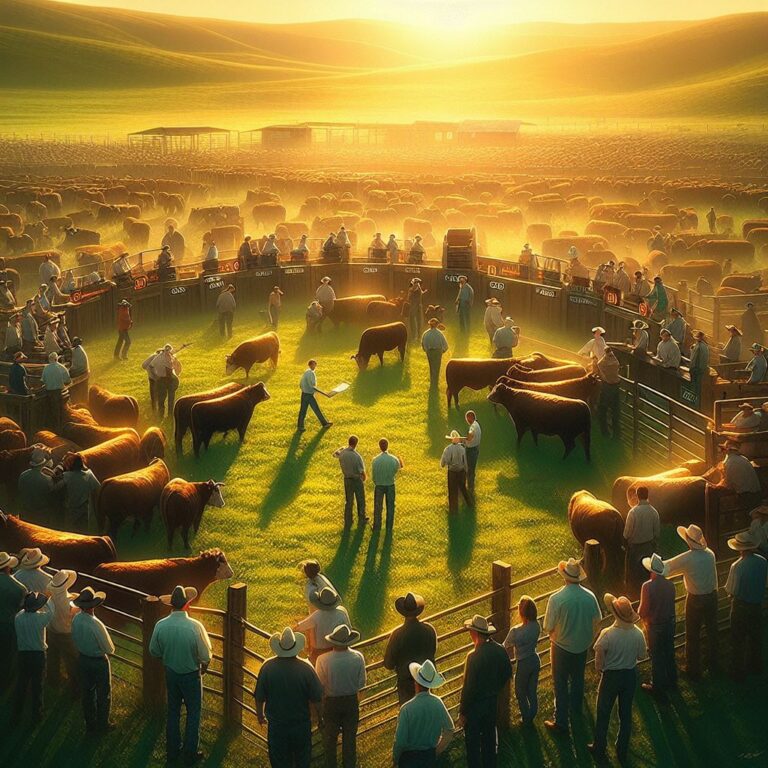Looking to expand your farming operations? Have you considered leasing row crop land?
Row crop land for lease is a type of agricultural land that you may not be familiar with. It is specifically used for growing row crops like corn, soybeans, wheat, or cotton.
By leasing this land, you can access the resources needed for crop production without the hefty cost of purchasing the land. It’s a win-win situation – you get to cultivate and harvest row crops, while the landowner earns income from their property.
In this guide, we’ll explore the benefits of row crop land leasing, different lease agreements, and the importance of insurance. Let’s get started!
Key Takeaways
- Access to arable agricultural land without land ownership
- Potential tax benefits and government payments based on income sharing percentages
- Simplified process of finding land-leasing options through platforms like Tillable.com and Farm Link
- Generate income from otherwise unused land
Benefits of Row Crop Land Leasing
Discover the advantages of leasing row crop land for you.
Leasing land for row crop farming can offer numerous benefits.
First and foremost, leasing provides access to arable agricultural land without the need for land ownership. This allows individuals to engage in row crop farming and generate income from otherwise unused land.
Leasing also presents potential tax benefits, such as the Beginning Farmer Tax Credit Program in Iowa, which can reduce tax liabilities and support the financial viability of farming operations.
Additionally, leasing row crop land offers the opportunity to participate in government payments based on income sharing percentages. By leasing land, farmers can tap into government programs and receive financial support that contributes to the overall profitability of their farming venture.
Moreover, platforms like Tillable.com and Farm Link simplify the process of finding and understanding land-leasing options. These platforms provide a centralized marketplace where farmers can connect with landowners, negotiate lease terms, and access valuable resources and information.
Finding the Perfect Lease Agreement
When searching for the perfect lease agreement, it’s important to consider various factors that will meet your specific needs and goals. Finding the right lease agreement can ensure a mutually beneficial relationship between landowners and tenants.
Here are three key factors to consider when looking for the perfect lease agreement:
- Lease Structure: The lease structure should be well-defined and clearly outline the responsibilities and expectations of both parties. This includes details such as lease duration, payment terms, and maintenance responsibilities. A well-structured lease agreement can help prevent misunderstandings and disputes in the future.
- Share Leases: Consider whether a share lease arrangement would be more suitable for your situation. In a share lease, the landowner and tenant share the risks and rewards of crop production. This can be a good option if you’re looking for a more flexible and collaborative arrangement.
- Compatibility: Finding a compatible landowner or tenant is crucial for a successful lease agreement. Consider factors such as communication style, farming practices, and long-term goals. A good fit between the parties involved can lead to a more productive and harmonious leasing relationship.
By carefully considering these factors, you can increase the likelihood of finding the perfect lease agreement that meets your needs. Understanding the different land-leasing options available will further help you make an informed decision.
Now, let’s explore the various land-leasing options and their benefits.
Understanding Land-leasing Options
To understand land-leasing options, consider the different types of lease agreements available and their benefits.
One type of lease is the fixed cash lease, where the landowner receives a predetermined payment per acre. This type of lease provides certainty of payment for the landowner.
Another option is the custom farming agreement, which allows for a personalized arrangement tailored to the specific needs of both the landowner and tenant. This type of lease offers flexibility and can be customized to meet the unique requirements of each party involved.
A crop share lease is another popular choice, where both the landowner and tenant share costs and revenue in an agreed percentage. This lease allows for sharing in the upside risk for the landowner, providing an opportunity for increased profits.
Additionally, there’s the lease to own option, which offers a potential pathway for a tenant to eventually own the land they’re leasing.
Lastly, flex leases combine attributes of cash and crop share leases, providing a base price with the flexibility to adjust based on external factors.
Understanding the different types of leases available can help you make an informed decision when considering land-leasing options.
Flex Leases: Risk and Reward
Consider the potential risk and reward of flex leases when leasing row crop land. Flex leases offer a unique balance of risk and reward for both the landowner and the tenant. Here are three key factors to consider:
- Market Volatility: With flex leases, the lease payment can flex up or down based on external factors such as market prices. This means that both parties have the potential to either benefit or face challenges due to market volatility. While this introduces risk, it also provides an opportunity for reward if the market prices are favorable.
- Government Payments: Flex leases typically involve sharing government payments based on income sharing percentages. This adds another layer of complexity to the risk and reward dynamic. The specifics of payment depend on the lease wording and structure, which means that both parties must carefully consider how government payments will be shared and how they may impact their overall risk and reward.
- Crop Performance: The performance of the crops also plays a significant role in the risk and reward of flex leases. If the crops yield well, both the landowner and the tenant can benefit from increased profits. Conversely, if the crops underperform, both parties may face financial challenges. It’s important for both parties to assess the potential risks and rewards associated with crop performance when entering into a flex lease agreement.
Importance of Insurance in Land Leasing
As you delve into the importance of insurance in land leasing, it is crucial to understand the protection and peace of mind it offers for both landowners and tenants. Insurance coverage plays a significant role in mitigating financial risks associated with unforeseen events on row crop land for lease. It provides security against potential damages or liabilities, ensuring that both parties are safeguarded in case of accidents, natural disasters, or property damage. By clarifying insurance responsibilities and coverage in the leasing agreement, disputes can be avoided, and both landowners and tenants can have a clear understanding of their obligations.
To emphasize the importance of insurance in land leasing, let’s take a look at the potential risks and benefits for both parties in a table format:
| Risks for Landowners | Risks for Tenants | Benefits of Insurance |
|---|---|---|
| Property damage | Crop failure | Financial protection |
| Liability claims | Equipment breakdown | Peace of mind |
| Natural disasters | Market fluctuations | Mitigation of financial risks |
This table highlights the risks that landowners and tenants face in land leasing and the benefits that insurance can provide. With the right insurance coverage, both parties can have the confidence to enter into a lease agreement, knowing that they are protected against unforeseen circumstances that may arise on the farm land. Insurance offers a crucial layer of security, ensuring that the financial well-being of both landowners and tenants is protected.
Frequently Asked Questions
How Much Does It Cost to Lease an Acre of Land in Texas?
Leasing an acre of land in Texas can cost an average of $3,167. However, keep in mind that this price can vary depending on factors such as location, property size, and lease type.
How Much Is a Grazing Lease in Texas?
Grazing leases in Texas average around $3,167, with a median rate of $2,500. The average size of available grazing land is 9.4 acres, and there are approximately 47 acres of land for lease.
How Much Does It Cost to Lease Farmland in Nc?
Leasing farmland in NC varies in cost based on factors such as location, size, and soil quality. On average, lease rates range from $50 to $200 per acre annually. It’s important to research local market rates for more accurate pricing.






